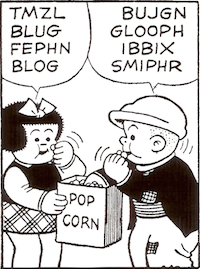John Lee Hooker and Canned Heat, Hooker ’n Heat. Liberty Records, 1971.
John Lee Hooker, guitar and vocal
Alan Wilson, guitar, harmonica, piano
Henry Vestine, guitar
Antonio de la Barreda, bass
Fito de la Parra, drums
Messin’ with the Hook : The Feelin’ Is Gone : Send Me Your Pillow : Sittin’ Here Thinkin’ : Meet Me in the Bottom : Alimonia Blues : Driftin’ Blues : You Talk Too Much : Burnin’ Hell (w/Bernard Besman) : Bottle Up and Go : The World Today : I Got My Eyes on You : Whiskey and Wimmen’ : Just You and Me : Let's Make It : Peavine : Boogie Chillen No. 2
Recorded May 1970. All songs by John Lee Hooker except as noted.
Hooker ’n Heat came out on January 15, 1971, forty years ago today. Still in print, it holds up as well as ever. To my ears, it’s the best record John Lee Hooker made. It might be Canned Heat’s best too, despite the performing absence of lead singer Bob Hite, heard here only in bits of studio chatter and one hearty cheer.
Anyone who thinks of blues music as formally rigid — three chords, twelve bars — has never listened to John Lee Hooker, whose music is typically monochordal and most often without evenly measured choruses. Hooker’s approach, known as “the boogie,” is sometimes characterized as “primitive” (or worse, “primal”), but its fluid sense of time makes much blues performance sound pedestrian and predictable by comparison. Listen to any number of Hooker recordings from the 1950s and ’60s, and you’ll hear a musician at odds with his supporting cast, players who cannot bear to abandon the proper three-chord, twelve-bar form. At times it’s as if two records are playing.
What makes Hooker ’n Heat immediately stand out from so much of Hooker’s work is that Canned Heat follows the leader, with genuine empathy. As good as the solo performances here are (I’d pick “The Feelin’ Is Gone” and “Send Me Your Pillow”), the high points of Hooker ’n Heat come in Hooker’s duets with Alan Wilson and in performances with the full (or nearly full) band. The greatest of the Hooker-Wilson duets is “Burnin’ Hell,” which begins with a variation on a couplet from Son House’s “My Black Mama” (1930). Here’s House:
And Hooker:Yes, ’tain’t no heaven and ’tain’t no burnin’ hell,Said where I’m goin’ when I die can’t nobody tell.
Everybody talkin’ about it, burnin’ hell,“Burnin’ Hell” builds in intensity, as the singer goes down to the church-house to ask Deacon Jones to pray for him. The singer prays all night, and his insistence that there is no hell begins to sound like a desperate plea not to be sent there: “Ain’t gonna burn in, ain’t gonna burn in, burnin’ hell.” The Hooker-Wilson connection here is uncanny: Wilson, on harmonica, anticipating and responding at every turn, shaping this performance into a piece of existential drama. “I dig this kid’s harmonica,” Hooker says before this tune begins. “I don’t know how he follow me, but he do.” “Burnin’ Hell” has an intensity rare in Hooker’s music, rare in Wilson’s music, rare in anyone’s music.
Ain’t no heaven, ain’t no burnin’ hell,
Where I die, where I go, can’t nobody tell.
With the band on board, Hooker hits what he calls “that groovy spot,” with great support from Henry Vestine, Antonio de la Barreda, and Fito de la Parra (who, like Wilson, are attentive to every shifting current). There are many great moments: Hooker’s sermonette in “Whiskey and Wimmen’,” his drop to his lowest (and lewdest) vocal register in “Just You and Me,” the way Wilson’s harmonica mimics Hooker’s guitar and voice in “Let’s Make It,” Hooker’s frenzied lament in “Peavine,” where he repeats the word gone fifteen times.
The best comes last, “Boogie Chillen No. 2,” eleven minutes and thirty-three seconds of it, with strong guitar solos by Henry Vestine and a brilliant harmonica solo by Wilson (with a switch of instruments midway to get to some low notes otherwise unavailable). Here too the Hooker-Wilson connection is clear: during Vestine’s first solo, Hooker says, “You hear that cat? On the harmonica? Let the cat hear you,” as if inviting a club audience to applaud. (Vestine then wraps things up.) And as the performance nears its end, Hooker shouts:
Alan! You feel good, and you feel good,It was not to be. Alan Wilson died (by his own hand perhaps) a few months after these performances were recorded. Thus the murky, somber album cover. Every musician on Hooker ’n Heat is now gone, save for Fito de la Parra, leading Canned Heat to this day.
Just like I thought that you would now.
[Bob Hite, Fito de la Parra, Henry Vestine, John Lee Hooker, Antonio de la Barreda. A photograph of Alan Wilson hangs on the wall.]
Related posts
Alan Wilson
Canned Heat (Live in east-central Illinois)



Wow!! I am thrilled to find your beautiful post on this classic album. Thanks for this in-depth discussion and analysis of the music. It's quite nice.
ReplyDeleteI hope you won't mind if I post a link to your blog in a couple of Alan-Wilson related groups and forums I administrate. I think there are a lot of fans out there who will enjoy it.
I'm about to read your other blog posts that you've linked to here. I'm sure I'll be posting comments there as well. Thanks for your excellent blog. And if you have not already done so, I think you'll want to check out the new site on Alan Wilson:
AlanWilsonCannedHeat.com
Rebecca, thanks for commenting and for sharing the link.
ReplyDeleteI found the new site recently and wrote something to the owner (Alan’s half-sister?). I hope my message got through. And I’ve now read Blind Owl Blues (finally!).